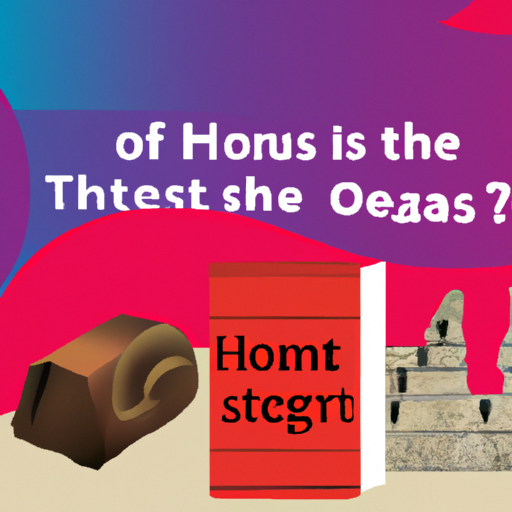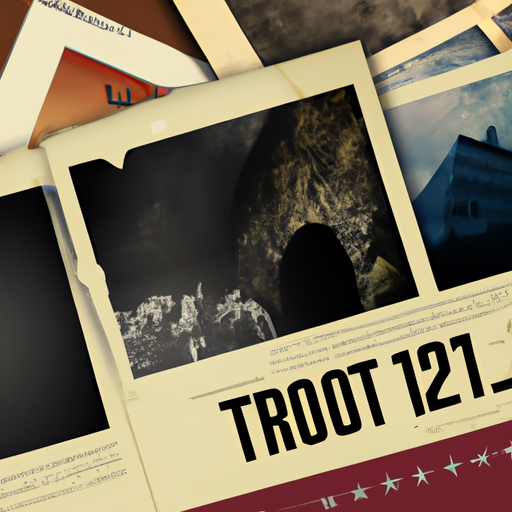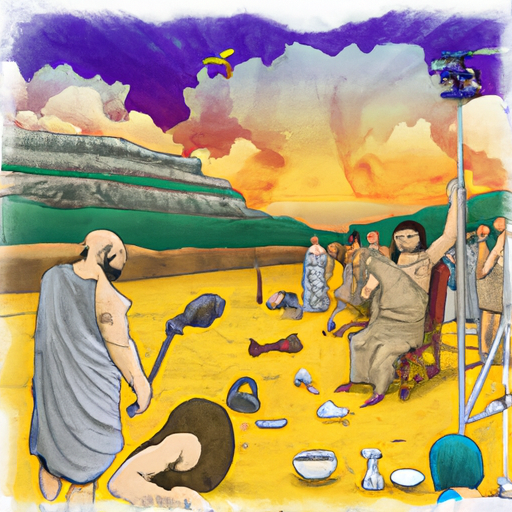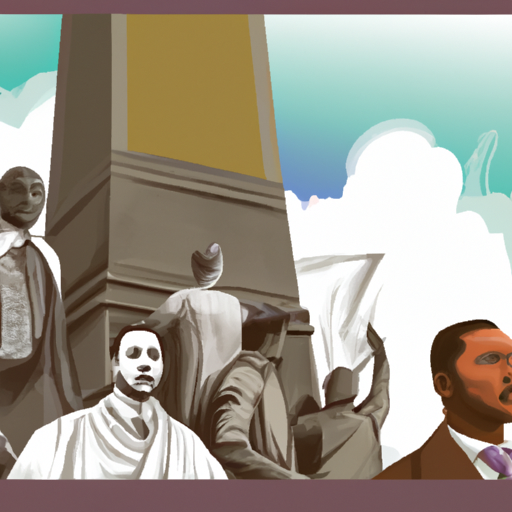History of Thor: The God in Different Religions
Unearth the deep-rooted saga of Thor, the almighty deity of thunder, in Norse mythology. Delve into his captivating past and explore his role as one of the most powerful gods in all of mythology. Uncover the mysteries surrounding this enigmatic figure and learn more about his fascinating backstory. Unravel the secrets that lie beneath his ancient tales and discover how he has come to be revered as a symbol of strength and courage.
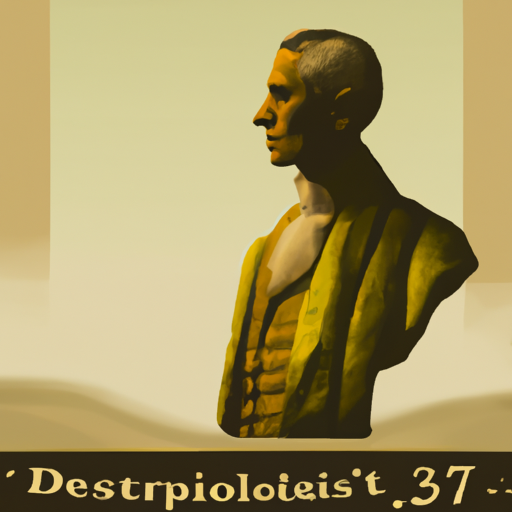
Mystique and excitement swirl around the ancient figure of Thor, a powerful god of thunder and lightning celebrated for his strength and courage. Tales of his heroic feats abound, from protecting Asgard, the realm of the gods, from all manner of threats to battling giants and trolls to subduing the Midgard Serpent. His magical hammer Mjölnir grants him control over storms and he is often portrayed as a mighty warrior with a red beard or an old man with a long white beard.
Today, Thor remains an enduring symbol of power and protection. From comic books to movies and video games, he continues to inspire people everywhere with his bravery and courage. To learn more about this beloved deity, take a journey through time to explore his fascinating history – it’s sure to be an enlightening experience!
.
Introduction

A figure of unparalleled might, Thor stands as a beacon of strength and protection for the realms of Asgard and Midgard. Wielding his hammer with unerring accuracy, this god of Norse mythology is renowned throughout history for his ability to vanquish giants and other adversaries. Thunder, lightning, storms, oak trees, strength, hallowing, fertility – all these elements are closely associated with Thor’s legendary power. His might serves to safeguard mankind from any danger that may come their way. Truly, he is an awe-inspiring deity whose grandeur knows no bounds.
– The Historical Origins of Thor in Religion
Since ancient times, Thor has been known as a powerful and feared warrior, his might protecting gods and humans alike from giants. He was also a prominent figure in Norse religion, safeguarding Asgard – the abode of the gods.
Thor’s fame is largely due to his physical strength and association with thunder and lightning. His hammer Mjölnir is renowned for its ability to bring down bolts of lightning on enemies, becoming an iconic symbol of protection and power.
It is thought that Thor’s roots can be traced back to Proto-Indo-European mythology where he was known by various names such as Donar or Thunar in Germanic cultures; Taranis in Celtic cultures; and Perun in Slavic cultures – all linking him with storms and thunder. Furthermore, he was seen as a god of fertility and agriculture, bringing rain which helped crops grow. This likely arose from early Indo-European traditions which viewed gods as responsible for natural elements like rain or snow that could aid crop growth.
Today, Thor continues to be revered by those who are interested in Norse mythology or paganism. His legacy lives on through stories passed down throughout the generations as well as symbols such as Mjölnir which remain symbolic of strength against evil forces.
– How Norse Mythology Influenced the Worship of Thor
Mysterious and awe-inspiring, the veneration of Thor has been a part of history for centuries. During the 8th to 11th centuries, the Viking people of Northern Europe worshipped him as one of their primary deities. He was associated with thunder, lightning, storms, strength and protection from harm – qualities that resonated with many cultures across Europe. His popularity was so widespread that numerous stories were told about him which have survived until today.
Thor’s hammer was an iconic symbol in Norse mythology and it served as both a weapon against giants and other enemies of the gods, as well as a sign of power and protection for believers. People would often wear amulets or charms featuring Thor’s hammer to demonstrate their devotion to him; this practice eventually spread to Christianity where it became known as “The Sign of the Cross”.
Furthermore, Thor was often depicted riding a chariot pulled by two goats named Tanngrisnir and Tanngnjóstr; this imagery is still seen today in popular culture such as Marvel Comics’ character “Thor” who rides a chariot pulled by two goats known as Toothgnasher and Toothgrinder – symbolizing his journey through the nine realms in search of wisdom and knowledge.
Norse mythology also had an impact on how Thor was worshipped by later generations; he became known as “the protector god” who could be called upon for help during times of trouble or danger. To show appreciation for his protection, offerings were made such as food or weapons; in some cases, shrines were even built dedicated to him in order to gain his favor or protection from evil forces.
Thus, it is clear that Norse mythology has had an enduring influence on our perception and worship of Thor throughout history – stories about him have been passed down through generations and continue to shape our understanding of this powerful god even today.
– The Evolution of Thor’s Role Throughout History
Throughout the ages, Thor has been a renowned figure in Norse mythology and other societies. Famed as the god of thunder and storms, he is typically portrayed wielding his hammer, Mjölnir. Thor’s role has shifted over time, from being a mighty deity to a representation of courage and might.
In Norse mythology, Thor was regarded as the defender of humankind. He was said to have done battle with giants and monsters to shield humans from harm. Furthermore, he was connected with fertility and agriculture, thought to bring rain that would help crops flourish. Additionally, he was also seen as a god of justice and law.
During the Viking Age, Thor’s part morphed when he became more closely associated with warriors. He was viewed as an emblem of strength and bravery for those heading off to battle and his image featured on many helmets and shields during this period. His hammer Mjölnir also grew popular among warriors who would take it into battle for protection or even use it in combat.
In recent times, Thor has become an essential figure in popular culture due to his appearances in Marvel comics, films, television shows, video games, and other media outlets. Here he is generally depicted as an heroic character who uses his powers for good instead of evil – safeguarding the innocent from danger while still upholding his sense of justice and honour.
Overall, Thor’s role throughout history has changed drastically over time – from being a powerful deity in Norse mythology to becoming an iconic superhero in modern pop culture. Despite these transformations however, Thor continues to be revered by many people around the world as a symbol of strength and courage who will always fight for what is right.
– The Spread of Thor’s Worship Across Cultures and Faiths
The mystifying saga of Thor’s veneration is one that has spanned centuries, transcending numerous cultures and beliefs. The Norse god Thor, son of Odin and the guardian of Asgard, found himself the object of adoration from far beyond Scandinavia – from Germany to Russia, Iceland to Ireland, his name was called upon for shelter from storms and other natural perils.
In Germanic mythology, he was known as Donar or Thunor in Old English. He was associated with thunderbolts, lightning, tempests, oaks, might and hallowing. His hammer Mjolnir was believed to be able to bring down lightning from the sky. In spite of his worship in Scandinavia being snuffed out by Christianization during the Middle Ages, it persisted in a variety of forms across Europe until modern times.
In Russia he was Perun or Perkons; Slavs worshipped him as a defender against evil spirits and bad luck. Þór (pronounced Thore) is still revered in Iceland today; Tuireann or Tuirenn is how he’s referred to in Ireland; Taranis or Taranucus is his Welsh cognomen.
At present Thor’s admiration continues taking many shapes over various cultures and faiths around the globe. Some neo-pagans have even adopted him as their principal deity while others employ him in rituals for protection against storms or other natural disasters. For instance there are several organizations devoted to worshipping Norse gods such as Ásatrúarfélagið (the Icelandic fellowship of Ásatrú) which has members from all corners of the world who practice contemporary varieties of Norse paganism including honoring Thor for his strength and protection.
To this day you can find people summoning Thor’s name for safeguard against any challenge life may throw their way – a demonstration of his enduring influence throughout history that reaches over cultures and beliefs around the world.
– The Impact of Thor on Ancient and Modern Religious Practices
Mysterious and awe-inspiring, Thor, the god of thunder and lightning, has had a monumental impact on religious practices since ancient times. Believed to be a protector from chaos and destruction, as well as a bringer of fertility and abundance, his hammer Mjölnir was thought to possess magical powers. This powerful symbol was used in many early religions and cults.
In modern times, Thor’s influence can still be felt. He is often called upon for protection or strength in rituals. His hammer is also sometimes used as a sign of power or courage in difficult times. Some even believe that his presence can be felt during storms!
Thor’s legacy continues to this day through his lasting presence in religious practices around the world. Whether it’s invoking his name for protection or using his hammer as a symbol of strength and courage, he has been an influential figure throughout history and will remain so into the future.
conclusion
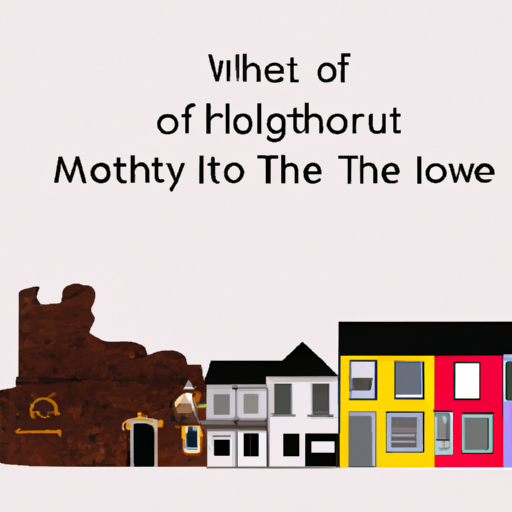
Thor, a deity of immense power and might, is an integral part of the ancient Germanic religion. His presence is often felt in the form of thunder, lightning, storms, and the strength of oak trees. He has been venerated for centuries and continues to be revered by modern day Heathenry and Germanic Neopaganism.
.
Some questions with answers
Q1. In which religion is Thor a god?
A1. Thor is a god in Norse mythology, which was the religion of pre-Christian Scandinavia.
Q2. How long has Thor been worshiped?
A2. Norse mythology dates back to at least the 6th century AD and likely even earlier.
Q3. What role did Thor play in Norse mythology?
A3. Thor was the god of thunder and storms, and he protected humanity from giants and other threats from the world outside.
Q4. Is Thor still worshiped today?
A4. While not as widespread as it once was, modern adherents to Norse mythology still venerate Thor and other gods from that pantheon.
Q5. Where can I learn more about the history of Thor?
A5. There are many books available on Norse mythology and its history, including “The History of the Vikings” by Else Roesdahl or “Norse Mythology: A Guide to Gods, Heroes, Rituals, and Beliefs” by John Lindow.
